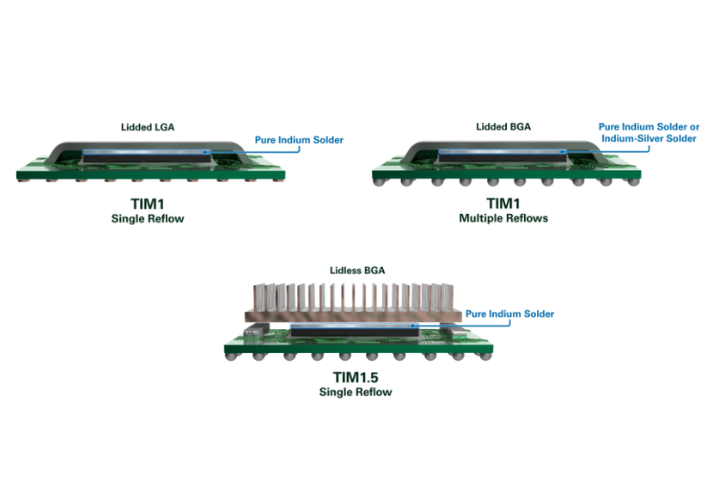Much to the surprise of the SnPb and SAC alloy consuming world, there are a number of alloys available in solder paste, each with their own unique melting points and soldering and mechanical properties. Below is a table containing some of the alloys possible in solder paste (not exhaustive).
|
Alloy Composition |
Melting Temperature (Solidus/Liquidus) |
|
46Bi 34Sn 20Pb |
96C (Eutectic) |
|
52In 48Sn |
118C (Eutectic) |
|
58Bi 42Sn |
138C (Eutectic) |
|
57Bi 42Sn 1Ag |
139C/140C |
|
97In 3 Ag |
143C (Eutectic) |
|
80In 15Pb 5Ag |
149C/154C |
|
100In |
157 (Melting Point) |
|
43Pb 43Sn 14Bi |
144C/163C |
|
70In 30Pb |
165C/175C |
|
62Sn 36Pb 2Ag |
179C |
|
60In 40Pb |
173C/181C |
|
63Sn 37Pb |
183C (Eutectic) |
|
50In 50Pb |
184C/210C |
|
Sn Ag Cu (SAC alloys) |
217C/220C |
|
96.5Sn 3.5Ag |
221C (Eutectic) |
|
95Sn 5Sb |
235C/240C |
|
80Au 20Sn |
280C (Eutectic) |
|
88Pb 10Sn 2Ag |
267C/299C |
|
92.5Pb 5Sn 2.5Ag |
287C/296C |
|
92.5Pb 5In 2.5Ag |
300C/310C |
|
95Pb 5Sn |
308C/312C |
None of these individual metals are found pure on the planet. They have to be mined, refined and then alloyed to the proper proportion with the other metals to create these solder alloys. Oftentimes a wet chemical technique is required after alloying to validate that the alloy meets the allowable tolerances and purities spelled out in J-STD-006 or a customer specific specification.



